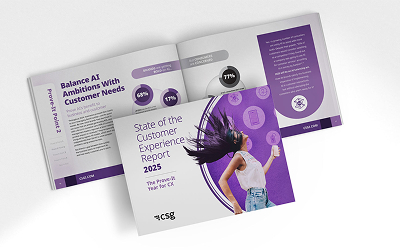With the rise of data analytics, marketers work more like scientists than they ever have. On Day 3 of MWC22, the session “Know Your Customer” gathered marketing leaders to talk about how data science, experimentation and optimization changed the way their brands engage customers.
The panelists shared their approaches to personalizing engagement across channels, as well as big discoveries they’re making as they analyze customer journeys.
MORE CHANNELS, MORE CHALLENGES
One of the biggest hurdles that marketers encountered in recent years was fragmentation—the growing assortment of digital channels their customers were using.
Tom Hunter, head of audience planning at The Guardian, said that this hurried the pace of marketing strategy. As new channels emerged, his company would need to test them as quickly as possible to see how they could best be used to engage The Guardian’s readers.
“Trends are hard to keep tabs on,” Hunter said.
Audiences have fragmented as well, since consumers now expect to be treated as individuals. Sarah Buschman, director of digital capability building at Virgin Media, underscored the growing need for personalization in mobile marketing, as mass communications that paint audiences with a broad brush are no longer effective.
“Customers are smart,” Buschman said. “They don’t just want to receive ‘stuff.’ It needs to be relevant for them to engage.”
Buschman said Virgin is moving away from the persona-based approach of putting customers in buckets and toward “segment of one” thinking. But to do that, they’ve needed to test out messaging strategies by segmenting customers in different ways that aren’t just based on demographics. An example would be grouping customers not by age, but by how much they use digital channels.
ONE COMPANY TO ONE CUSTOMER
Personalized engagement has required companies to transform in ways that are both technological and cultural. Buschman said her company is centralizing their systems for handling customer data, as well as their processes for responding to customer behavior.
The status quo was that the marketing, service or network teams would each communicate with customers independent of each other. Now, they have to coordinate and figure out the best response for when a customer makes an inquiry, or when the customer just had contact with the care team.
“And we need to know that, because this is our one company talking to one customer,” Buschman said.
TESTING…TESTING…
Centralizing mobile marketing is also key to another theme that emerged in the session: ongoing experimentation.
Aurora Gómez Cabezas, vice president of growth at mobility service provider FREE NOW, said that marketing has to continually test new engagement approaches as new channels appear, customers change behaviors and competitors move. “It’s a constant evolution,” she said.
“When we realize that we have found something that works, then we automate that,” Gómez Cabezas said.
An example of something that worked: FREE NOW learned from analyzing journeys that it was less costly to retain their app’s users than acquire them. So they mapped the correlation between the experiences users were having and their likelihood of retention.
They found that when a user booked a ride and the driver canceled it, it had a devastating effect on retention. FREE NOW addressed that by helping users immediately re-book a ride when cancellations happen, Gómez Cabezas said.
Hunter gave an example from the Guardian. The company wanted to know what made its readers more likely to join its paid Patrons membership, and the main factor turned out to be their length of time as a Guardian reader. The Guardian used that tenure data point to send targeted, automated emails that were “super effective” in converting readers, Hunter said.
But automating doesn’t mean marketers can set it and forget it. Gómez Cabezas stressed that even when brands discover a winning engagement technique, they should continue testing it to ensure it’s still getting results.
“We keep the experimentation ongoing because it’s very rare that you will find a silver bullet.”










